
Agent Bible
Wild Animals: Carnivores

|
|
||||||||||||||
|
Habitat: |
Snow leopards, as the name suggests, inhabit the regions of Tibet that are cold, barren and harsh: the steppe and slopes. The size of their range corresponds to the availability of prey animals and can vary between about 40 square miles to over 100 square miles in really barren places. They take a tour around the territory on a regular basis, checking their scent markers and looking out for intruders. |
|||||||||||||
|
Diet:
|
Snow leopards are feared by most things on the steppe and the rocky slopes above it. They will take serow, tahr, blue and even argali sheep, takin and many other large herbivores, and top up on pika, marmots and voles when times are harder. They may also scavenge animals dead of cold or disease. Basically they are the top predator (apart from the occasional tiger and large wolf packs) of the steppe and slopes. |
|||||||||||||
|
LifeStyle:
|
Snow leps are solitary apart from females raising cubs. A large kill such as a takin will last them several days, and if possible will be dragged up Sto a rocky ledge to be cached for later. Leps come together for the mating season when they become very vocal - the screams and howls of a snow leopard are thought to have been the basis for many yeti stories... |
|||||||||||||
|
Special
Skills:
|
All senses excellent - can smell a carcass from miles away, can detect voles under feet of snow by hearing them, etc. | |||||||||||||
|
||||||||||||||
|
Other:
|
Extremely rare and endangered | |||||||||||||
|
|
||||||||||||||
|
|
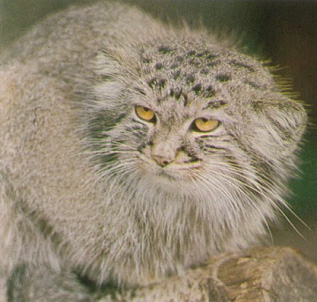 |
|||||||||||||
|
Habitat: |
The Pallas cat with its thick fur is ideally suited to life at high altitudes where the weather rarely is anything other than cold. During the summer it may occasionally be seen on the edges of the steppe, but spends the majority of its time higher in the mountains on the scrubby alpine meadows and rocky slopes. It often makes its den between boulders on these slopes. | |||||||||||||
|
Diet:
|
The solitary pallas cat uses its camouflaged coat and flat head to stalk small prey in the rocks and scrubby areas of Tibet. It catches small mammals such as pika and voles and can even catch birds as they fly up from the ground; partridges and pheasants are favoured foods. In times of hardship it will roam widely to find food and at such times may even eat eggs, fruit, vegetation and scavenge on other predators kills. | |||||||||||||
|
LifeStyle:
|
Like the majority of cats, the pallas cat is largely a solitary creature. Females have territories that may cover as much as 8 square kilometres, and males are usually free-roaming across those territories. Except for the mating season, contact between cats may well lead to fierce fights unless a local hierarchy has been established. Dens are made deep in piles of boulders usually, and in here females give birth once a year to litters of cubs. the average litter size is not known, nor are many of the details of the cat's life - they are very wary of any human contact. The cat has extremely thick fur on its underside and furred feet, and these along with its flat head are of great advantage in helping it stalk prey across cold barren landscapes. | |||||||||||||
|
Special
Skills:
|
Good black and white vision, excellent smell and hearing. Whiskers add detail such as wind direction and vibration. | |||||||||||||
|
||||||||||||||
|
|
||||||||||||||
 |
||||||||||||||
|
Habitat: |
Tigers prefer to spend most of their time in forested areas where they can ambush their prey without scaring them away. Although they can be found on farmland or in open spaces, these individuals are usually immature males who have not yet found a territory to defend, or injured and old animals that have been forced off their own land. It is these individuals that may attack people - most tigers are far too wary to do this except under the most severe provocation. Tigers may also be found at high altitudes in Tibet - although again these tigers seem to be immature males who have come from India looking for a home or males scouting for females to mate with and rarely set up a hoe range in these areas. | |||||||||||||
|
Diet:
|
Tigers seem to eat whatever they fancy. Cubs will start off by catching small mammals, amphibians, birds and so on before working their way up to the tiger's normal fare of deer and the variety of goat and sheep-like animals that Tibet has to offer. On very rare occasions a tiger may pose a problem when it begins to take livestock from farms, but these tigers are usually old, sick or injured individuals. | |||||||||||||
|
LifeStyle:
|
Tigers are solitary creatures. Females care for their cubs for 2 years usually, but then chase their young out of their home territory. Males wander further away from their birth range than females, and hold territories that are half again larger on average. The average range of a tiger usually depends on the density of prey in that area, so it is difficult to say how many tigers there are in each area. Each tiger will strongly defend its home against intruders and fights may result in the death or serious injury of one or other tiger. Females will tolerate males on their territory during the breeding season, but males leave as soon as the female is pregnant so as not to get attacked later. | |||||||||||||
|
Special
Skills:
|
Attack and intimidation! Tigers have the usual predatory complement of good hearing, good vision and good sense of smell. To this they also add the ability to see in dark or gloomy conditions - their retina has a mirrored layer that reflects light back into the eye to maximise nightvision. their smell is strengthened by having a Jacobsen's organ in the roof of their mouth, allowing them to smell and 'taste' any scents at the same time. Whiskers convey information about wind currents and vibrations. | |||||||||||||
|
||||||||||||||
|
|
||||||||||||||
 |
||||||||||||||
|
Habitat: |
A pack of wolves may have territory that covers over 100 square miles of ground - and they have the stamina to go from one end of it to the other in search of food. They generally keep to higher altitudes where competition between themselves and smaller predators gives them the advantage, and allows them to find large game to kill. they may be tempted down into villages during hard winters, but also find themselves frequently in conflict with humans when their territory encompasses woods that are 'farmed'. They may take livestock if no other prey is available. | |||||||||||||
|
Diet:
|
Individual wolves may catch and eat small mammals such as voles and pika - especially 'helper' wolves who are acting as baby sitters for young in the pack. This sort of hunting will sustain individuals but may lead to fights over food, and so the pack will hunt together on a regular basis to find and bring down large game. depending on the size of the pack they may take anything from musk deer to wild yak. what is not eaten at the time of the kill may well be cached or defended for later consumption. | |||||||||||||
|
LifeStyle:
|
Wolves have an extremely complex social system based around an adult breeding pair holding a huge territory. Other members of the pack may be young from previous years that have no chance of establishing their own territory and so stay at home, or siblings of the adult pair. It is rare that lone wolves are allowed to join a pack, although many wolves (ex-alpha adults forced out of the pack by younger animals, lone males, adolescents) do survive well on their own. These wolves may well be tempted into villages and towns more frequently than pack animals and so are often at greater risk of being persecuted by humans. | |||||||||||||
|
Special
Skills:
|
Smell is excellent as are hearing and sight. Probably two-colour vision, but great focus and clarity. Able to see well in the dark. Able to track prey by smell. Hearing allows them to find nests of mice and voles under snow or ground. Able to hear a higher pitch than humans. |
|||||||||||||
|
||||||||||||||
|
|
||||||||||||||
 |
||||||||||||||
|
Habitat: |
Lynx are found in colder climates, where their thick fur protects them against variable weather and cold. They occupy a range of habitats from thick forest to the rocky slopes of the Himalayas where their individual territories can vary between 30 and 300 square miles. The size of the territory seems to vary dependant on the population of the main food source - pika and hares - and gender of the animal. As in most carnivores, the territory of the male overlaps the smaller territories of several females. | |||||||||||||
|
Diet:
|
Lynx are very good hunters, creeping up on their prey and pouncing. They are agile enough to be able to catch birds flying over them as well. Their main prey are the hare and pika that colonise the forests, steppe and rocky slopes in the west of Tibet, although they also eat voles, birds and may even take small deer such as the musk deer if they come across one. Populations of lynx and pika are toed very closely together - if the pika population crashes, then lynx may actually be almost wiped out in that area - they do not leave their territory (once they have established one) until dead, so do not migrate to find new sources of food. | |||||||||||||
|
LifeStyle:
|
Like most cats, lynx are solitary animals. The females usually have smaller territories that they allow males to wander through; when in season, mating takes place and the male goes off to the next female. Twins are usually born in late spring and remain with heir mother for the first year, learning how to hunt on their own. Dens are usually made in piles of fallen logs or under heaps of boulders. The lynx roams widely across its territory to hunt, but often keeps to the same trails where it can routinely be spotted. They are extremely shy and wary of humans and are ferocious if cornered. | |||||||||||||
|
Special
Skills:
|
Excellent hearing and smell, good (two colour) vision. Often appear to 'pant' - this is to draw air over the organ in the roof of the mouth that 'tastes' smells to amplify their usefulness. |
|||||||||||||
|
||||||||||||||
|
Other:
|
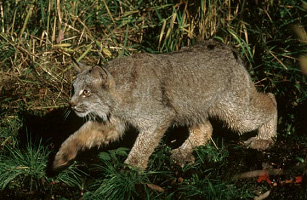 |
|||||||||||||
|
|
||||||||||||||
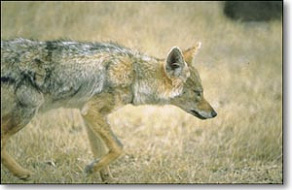 |
||||||||||||||
|
Habitat: |
Jackals prefer to spend their time hunting in open areas where they can see larger predators (who may even kill jackals) approaching them. In Tibet they seem to be spread in an area that encompasses the fringes of the temperate forest, the steppe and the foothills of the mountains where the terrain is more rocky. They build their dens in disused burrows made by other animals or dig out an underground burrow themselves. | |||||||||||||
|
Diet:
|
Jackals are very adaptable and may include as much as 50% plant matter in their usually carnivorous diet. They catch small mammals such as pika, voles, rabbits, hares and marmots as well as frogs and snakes, but also take fruit, roots, tubers, berries and other vegetation as well. They also serve an extremely important function as scavengers, helping to clear dead animals off the steppe. | |||||||||||||
|
LifeStyle:
|
Jackals live as mated monogamous pairs and stay together for life. They either live as a pair or with young from previous years who have not yet found a territory and hang around helping to raise their siblings. Jackals usually defer to any other larger carnivore an their territories tend to be crammed in between those of wolves, lynx and tigers, but still strongly marked and defended. territories are rarely larger than a few square kilometres. Howling and a range of other sounds are used to keep the pair (or pack) together. | |||||||||||||
|
Special
Skills:
|
Good smell and hearing - can detect small mammals underground by hearing them move around, and use smell as communication between themselves (scent marking etc). Vision good even in low-light conditions, although probably two-colour only. | |||||||||||||
|
||||||||||||||
|
|
||||||||||||||
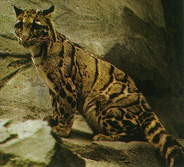 |
||||||||||||||
|
Habitat: |
This small and shy cat lives most usually in tropical forest and marshes. They can tolerate a bit of cold, but rarely venture into areas where there is no tree cover, so the edges of the steppe form the limits of their domain in Tibet. | |||||||||||||
|
Diet:
|
Although quite small, this leopard is capable of bringing down langurs, macaques, birds and is the terror of any local small mammal population. In hard times they may come quite close to remote villages where they can catch rats and mice during the night, but they are very shy and rarely seen. | |||||||||||||
|
LifeStyle:
|
Very little is known about this cat in the wild as they are quite rare and extremely elusive. They are excellent climbers and very agile. It is thought that they are solitary except for mating, and probably have a couple or three cubs. | |||||||||||||
|
Special
Skills:
|
Sense of smell is good but not exceedingly so. Cats rely much more on their vision and hearing than anything else, and the clouded leopard is no different. Like most cats, they have excellent night vision and very acute hearing. The whiskers give them detailed information about their surroundings and any air currents that might help them locate danger or food. | |||||||||||||
|
||||||||||||||
|
|
||||||||||||||
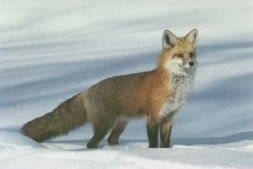 |
||||||||||||||
|
Habitat: |
Red foxes are another species of animal, like voles, that seems to crop up almost everywhere. It adapts well to all sorts of different situations, and can be found anywhere in Tibet from villages and towns to the open steppe. The only reason that its range does not extend up the Himalayas is that it is out-competed by more specialised animals. | |||||||||||||
|
Diet:
|
One of the adaptations that foxes have that helps them to be so commonplace is the fact that they will eat almost anything. Foxes living in the deep country far from humans will hunt pika, rabbit, small birds, mammals, eat eggs, dig up fruit and roots and generally find food wherever they can. In towns, foxes have adapted well to the human habit of putting rubbish in one place, and can often be seen scavenging in rubbish tips, open ground, backs of houses and so on. Foxes also like agricultural land as it gives them a steady supply of corn-fed mice and voles. | |||||||||||||
|
LifeStyle:
|
Foxes are slightly less sociable than wolves, but do tend to live in extended family groups. A territory is usually held by an established breeding pair who may tolerate their adolescent young from last year on the territory in return for help rearing this years litter. However, male foxes do have a tendency to stray if unattached female foxes are nearby, and so may end up supporting two or more families scattered widely over a large area. foxes are very wary of humans, but do not seem to be especially afraid and can often be seen sunning themselves in quiet areas of towns or villages. They usually hunt at dusk or dawn, but the cubs especially may be seen playing during the day as well. Foxes are seen as symbols of cunning and fidelity in Tibet. | |||||||||||||
|
Special
Skills:
|
Vision is in two colours and better than human - able to see well in dusk due to reflective layer inside eye (flashes in the dark like a cats). Have a truly astounding sense of smell and hearing - able to hear mice etc., even underground, and can smell cached food after several months. May also be able to hear outside human range - infrasound used by cubs to communicate with mother. whiskers help to add detail to surroundings and also increase sensitivity to wind, vibrations etc. |
|||||||||||||
|
||||||||||||||
|
|
||||||||||||||
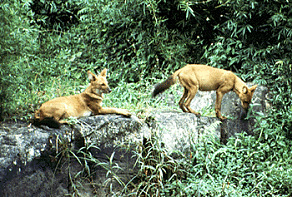 |
||||||||||||||
|
Habitat: |
The dhole is usually found in forested areas but can also be found on the steppe and even on the rocky slopes in the foothills of the mountains. However, they are extremely rare and tend to be confined to places where they do not conflict with wolves - a wolf pack will exterminate a dhole pack if they feel threatened. An average pack is about 10 - 15 animals. | |||||||||||||
|
Diet:
|
Dholes are strict carnivores and hunt in packs to bring down larger game than each individual could manage. They appear to be extremely fierce when hunting and a small pack can bring down anything from a wild bar (no mean feat in itself) to some of the larger herbivores - deer, ibex, argali sheep. | |||||||||||||
|
LifeStyle:
|
Dholes are very strange animals, and like hyenas, there is great debate about whether they are actually dogs or not. They do not bark at all, but have a variety of calls including whistles, clucks and mewing and screaming! Packs appear to be extended families and only one pair in each pack breed, with the others helping to raise the cubs. Dhole are agile and can climb small trees, and also seem to enjoy swimming. They are usually active at dusk and dawn and bask in the sunshine during the day. Any animal that has been away from the group is greeted ecstatically on their return and the entire pack will 'serenade' them loudly. | |||||||||||||
|
Special
Skills:
|
Excellent predatory vision, smell and hearing. With the long-distance communication between pack members, can collect information from a wide area quickly. | |||||||||||||
|
||||||||||||||
|
Other:
|
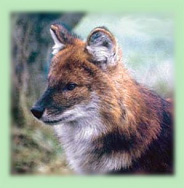 |
|||||||||||||
|
|
||||||||||||||
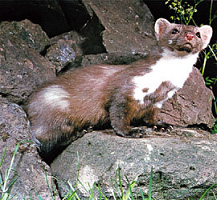 |
||||||||||||||
|
Habitat: |
This large relative of the weasel lives in forests - especially evergreen ones. It is extremely lithe and agile, and spends much of its time up in trees, jumping from one to another, climbing up and down and rarely reaching the ground. It builds a den in an abandoned hole in a tree (if it can find one). As the name of this species suggests, it's range extends beyond the point where trees give up and become large bushes and is equally at home in these areas scrambling over the rocky slopes in search of small squeaky prey. | |||||||||||||
|
Diet:
|
Martins are carnivores and catch their prey predominantly in trees. They usually catch birds and fledglings, but also relish eggs and even squirrels. They are extremely fierce and dangerous, and will often take prey much larger than themselves - even lynx are cautious when they come across a martin. Martin will also take pika, voles, hares. | |||||||||||||
|
LifeStyle:
|
Martins are carnivores and catch their prey predominantly in trees. They usually catch birds and fledglings, but also relish eggs and even squirrels. They are extremely fierce and dangerous, and will often take prey much larger than themselves - even lynx are cautious when they come across a martin. Martin will also take pika, voles, hares. | |||||||||||||
|
Special
Skills:
|
Excellent sense of smell and vision. Good depth preception. Average hearing. Probably two colour vision. |
|||||||||||||
|
||||||||||||||
|
|
||||||||||||||
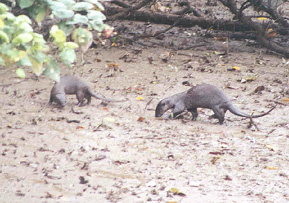 |
||||||||||||||
|
Habitat: |
The smooth otter is usually found in lowland areas in close association with water. They prefer their water to be running, so a forested river is perfect, although they can occasionally be found in marshy or swampy areas as well. | |||||||||||||
|
Diet:
|
Although a wide variety of fish form the main part of their diet, otters will also readily diversify. They enjoy eating shell fish, crustaceans such as crabs and crayfish, frogs, eggs, small birds and mammals and even the occasional water snake. If it can be found and caught within a short walk of water, then an otter will usually eat it. | |||||||||||||
|
LifeStyle:
|
Smooth otters have a more complex social life than many other types of otter. The basic unit is a breeding pair, but often groups of otters upto 20 or so individuals will share a single burrow complex. These additional otters are usually the extended family of the breeding pair - sometimes siblings that haven't managed to find a territory of their own, or adolescent and young adult otters that have not yet left home. as water-side territory with good burrow sites and abundant food is hard to come by, smooth otters have developed a system that minimises fights over land. They are very vocal and have a wide range of alarm and other calls to keep them in constant contact. They are also extremely playful and spend almost as much time (even as adults) playing around as they seem to do hunting. | |||||||||||||
|
Special
Skills:
|
Otters have a keen sense of smell that ties in with their sense of taste - they have an additional organ in the roof of their mouth that allows them to 'taste' smells. This helps them underwater - smell would be useless, but using this system they can still track down interesting scents by tasting the direction they come from. In addition to this, otters eyes work well underwater, although on land they are quite short-sighted. Their hearing is acute on land, and their bristles help them to detect vibrations in air and water. |
|||||||||||||
|
||||||||||||||